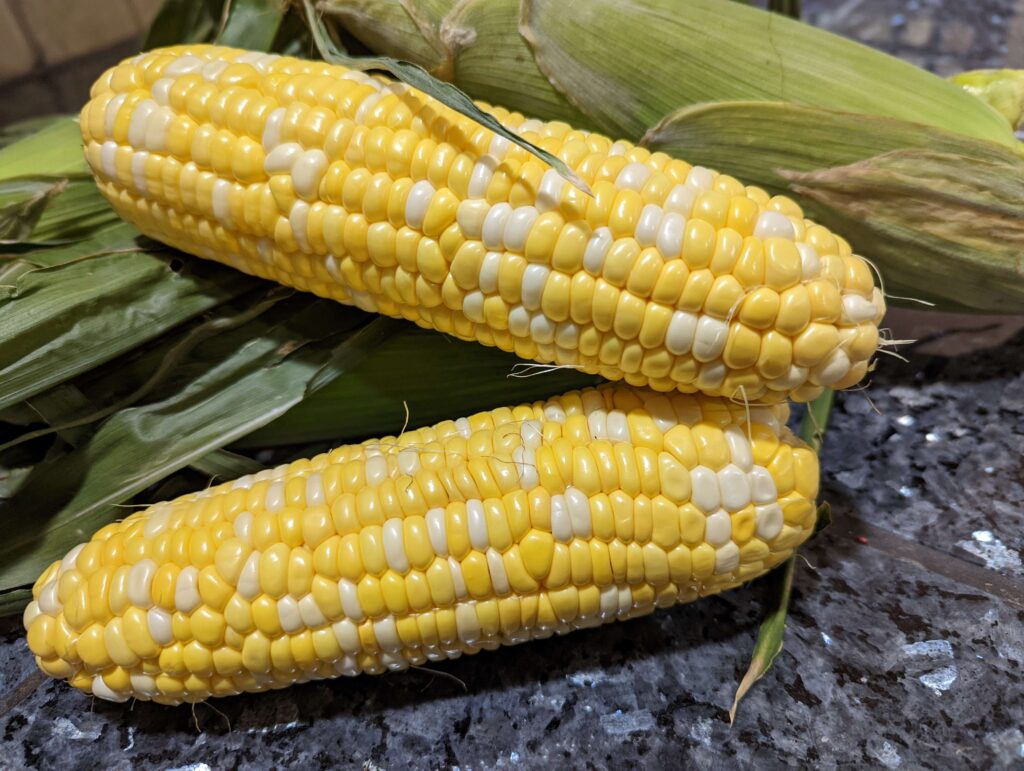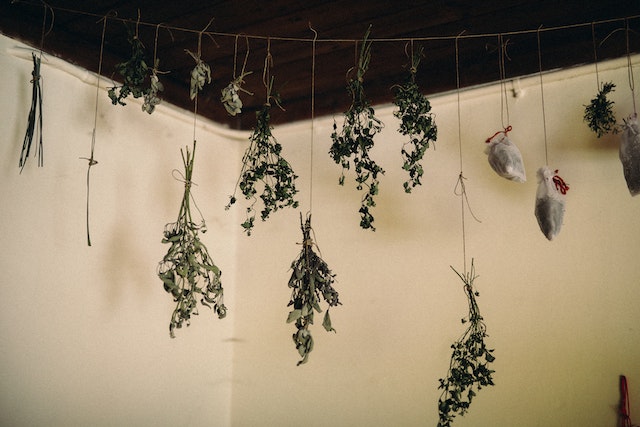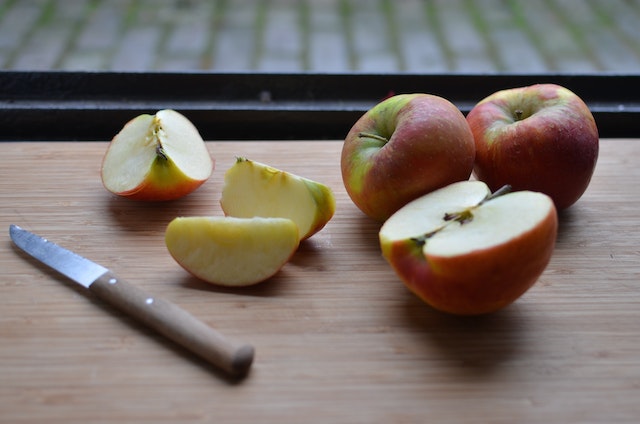For the past few weeks I’ve been gathering from my garden, foraging near my home, and frequenting local farms. I’ve collected plenty of raspberries, sweet corn, tomatoes, jalapeños, herbs, red and green cabbage, and apples. I’ve preserved these foods using a variety of different methods: keeping some foods as individual ingredients and integrating others into entrees, sauces, and sides. Here are some ways I’ve been preserving food recently.
Some foods are simple to preserve. For raspberries I wash and dry them, put them in a single layer on a baking sheet, then set them flat in the freezer. After the berries have frozen solid I take them off the baking sheet and put them in a freezer bag for later use.

Corn is also frozen. I spend more time processing it, but the process is simple. I blanch corn on the cob, put it in an ice bath to cool, cut the kernels off the cob, and freeze the kernels on baking sheets, similar to how I froze the raspberries. After the kernels are solid, I transfer them to freezer bags.
Tomatoes are frozen or water bath canned. The fresh tomatoes are either washed, dried, and frozen whole in reused plastic bags; or washed, chopped, and added to reused salsa jars to use in place of canned diced tomatoes in recipes. Paste tomatoes have been cooked down and frozen in 1 tablespoon increments to use in future recipes. As for canning, I’ve made both tomato sauce and salsa. They’re now safely stored for future use.
The jalapeños are pickled or added to the salsa mentioned earlier.

Herbs are processed in different ways. Mint, oregano, raspberry leaves, and rosemary are washed and dried, then left to hang upside down in airy areas to dry out for use in cooking and teas. Coriander seed is collected and left to dry on the counter since it is too small and fragile to hang. It will be used for cooking and future planting.
Cabbage is used in three different ways: to make sauerkraut, pickled cabbage, and gyoza filling. The green cabbage for sauerkraut is thinly sliced, salted, smashed, and left to ferment in a dark area. The red cabbage is thinly sliced and added to a large amount of vinegar, spices, and water. It has been put away in the back of the refrigerator to pickle. All leftover cabbage is used in a big batch of gyoza filling. The gyoza has been made and placed in the freezer for a quick dinner another time.

Lastly, apples are made into apple pie filling as well as applesauce. The pie filling is frozen in batches of hand pies. The applesauce has been either frozen in small “pucks” in a silicone ice mold to be used in cooking (as a flavorful oil replacement), or water bath canned in pint and quart size glass jars.
Preserving food is less common in today’s life than it was in the past. It is a labor of love, but it all becomes worth it when food is ready and waiting during the cold winter months. If you are wondering how to start preserving more food, think about what you’d like to eat over the next 3-12 months and consider what method of food preservation would work to use in those meals. Some preservation methods may be a bit restrictive for people dependent on time, space, or energy, but I believe almost anyone can find some way to preserve food for the future if they so desire.